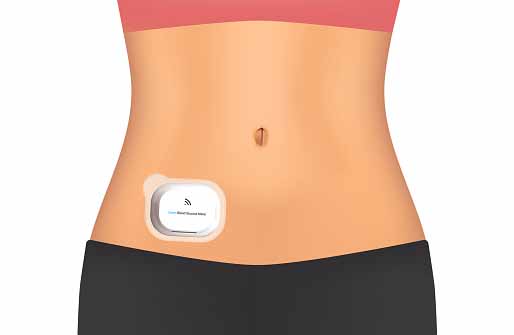Are You A Diabetic? Do You Find Needle Pricks For Blood Sampling An Ordeal, Then CGM Is A Boon!!
As a diabetic yourself, or living with someone who has diabetes, it is a continuous struggle to get a hang of the medications, blood glucose values and other terminologies related to diabetes. And to top it all, now comes this new one - Continuous Glucose Monitoring (CGM).
What is CGM?

A continuous glucose monitor is a small device which can be worn by the patient to keep a track of blood glucose levels all through day and night.
Regardless of whether you are awake or asleep, with continuous glucose monitoring, extreme fluctuations in blood glucose levels can be prevented and treated. Though not a recent development in diabetes treatment, awareness regarding continuous glucose monitoring is still lacking.
Why CGM?

CGM helps you stay alert of your blood glucose levels and how they can get altered based on food, exercise, and medication. The outcome is also much faster than the conventional methods of blood sampling and glycosylated hemoglobin levels. For those who find needle pricks for blood sampling an ordeal, CGM is a boon. It is the perfect solution to save people with diabetes from the physical pain and anxiety they undergo before every blood test.
International bodies such as the American Diabetes Association have found CGM to be especially useful for children, teenagers and young people with diabetes. Also, patients with repeated low blood sugar (Hypoglycemia) episodes benefit a lot from CGM.
Here are three prime reasons to make CGM an important part of your diabetes management plan:

1. No more hypoglycemic episodes: Scientific studies have shown that CGM is beneficial for meticulous glucose control and prevention of low blood sugar. It provides information about fluctuating glucose levels all day long. This helps in avoiding a hypoglycemic shock even if you mess up on your diet, medication, or exercise regime at times.
2. Gain without pain: With CGM, there is no need for multiple blood samples throughout the day.
3. Round-the-clock monitoring: A CGM device displays the ups and downs in glucose levels throughout the day rather than only at certain points in time. The device can detect precariously low sugar levels at night, early morning sugar spikes, and high blood sugar levels between meals. Also, the device rings an alarm when glucose levels fall too low or rise too high.
So, with such an innovative technology available at hand, it is time to make living with diabetes easier and healthier. Stay aware, go techie, and stay healthy!
For any query related to diabetes management, you can consult a Diabetologist at www.healthcaremagic.com
Ask a Specialist
Recent Questions


